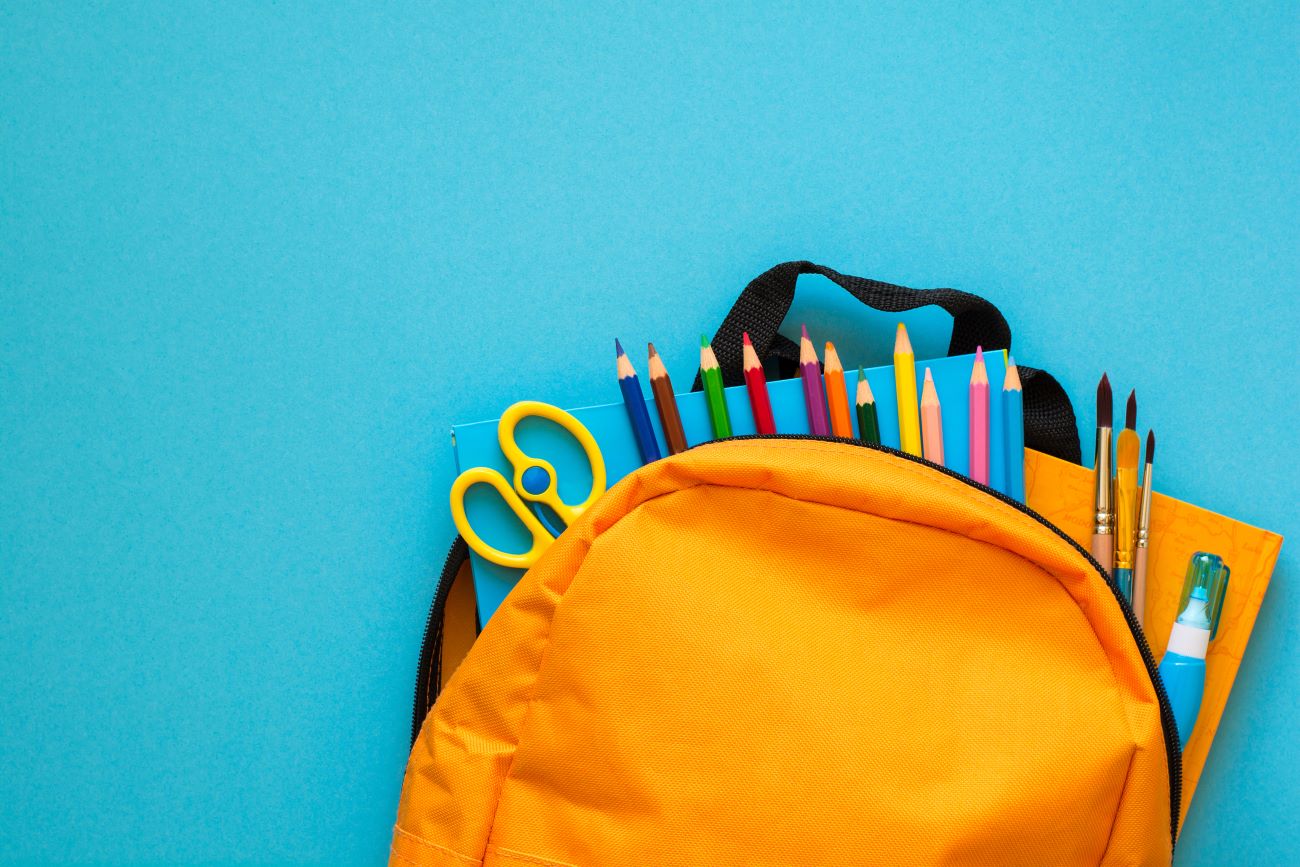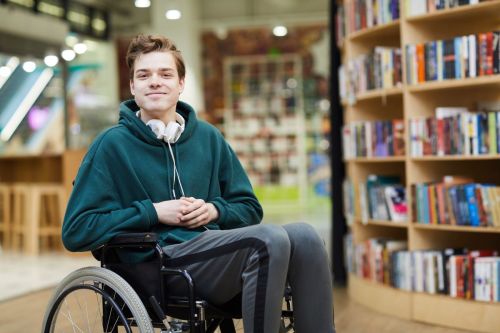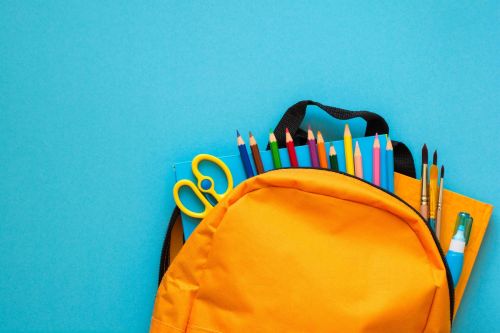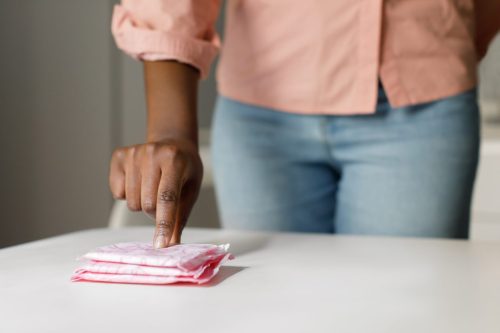By the time we finally get around to cleaning out the backpacks and airing out the lunch containers, the advertising jingles and reminders to get a head start on back to school shopping are already in full force. While it may feel too soon (and too exhausting) to think about back to school supplies in the summer months, getting a head start on creating a budget, making a list of supplies, and looking for the best back to school deals is a great way to save money and avoid buying things your kids don’t need.
Here are tips on how to stick to a budget and buy the essential back to school supplies for your kids and teens this year.

When do kids go back to school for 2023–24?
Below is a list of each province or territory in Canada and the first day of class for elementary and high school students for 2023-2024.
| Province or territory | When school returns in 2023–2024 |
| British Columbia | Tuesday, September 5, 2023 |
| Alberta | Tuesday, September 5, 2023 in Calgary Tuesday, September 5, 2023 in Edmonton |
| Saskatchewan | Tuesday, September 5, 2023 |
| Manitoba | Tuesday, September 5, 2023 |
| Ontario | Tuesday, September 5, 2023 for TDSB, YDSB, CDSB, OCDSB, DSBN, PDSB, GEDSB, and DDSB. Wednesday, September 6, 2023 for HDSB, WRDSB, and WRDSB. |
| Quebec | Wednesday, August 30, 2023 |
| New Brunswick | Tuesday, September 5, 2023 |
| Nova Scotia | Wednesday, September 6 2023 for Cape Breton Regional Centre for Education and Chignecto Central Regional Centre for Education. Thursday, September 7, 2023 for Halifax Regional Centre for Education. |
| Prince Edward Island | Thursday, September 7, 2023 |
| Newfoundland and Labrador | Wednesday, September 6, 2023 |
| Northwest Territories | Monday, August 28, 2023 |
| Nunavut | Varies from August 14 to September 5, 2023. |
| Yukon | Most schools go back Tuesday, August 22, 2023. |
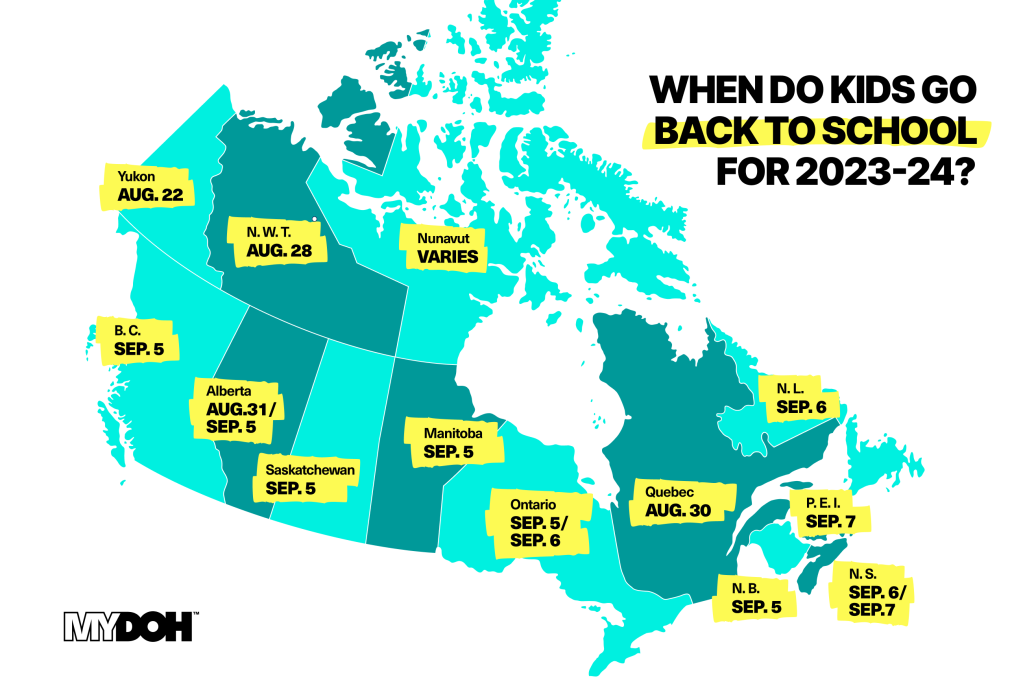
How much do Canadians spend on back to school supplies?
Canadian families estimated they spend up to $900 a year on school supplies in 2020. And most of those costs are up front prior to the start of the new school year. However, we all know kids grow out of shoes and clothes and that projects have a way of coming along and surprising us with last minute trips to the store for craft supplies. For older kids, the cost of buying supplies like glue sticks and markers decreases, but there is a huge jump in the need for technological tools like scientific calculators and laptops (and let’s not forget the cost of clothing goes up, too!).
What do you need for back to school supplies?
The most important step, when it comes to preparing a list of the best school supplies, is to create a budget that is based on what your student needs. This will help prevent any impulse purchases when you are confronted by all the dazzling back to school displays. Many schools should have grade-appropriate lists on their websites and some teachers also provide specific lists. But, if you don’t have access to the information during the summer months, you can start by asking parents with older kids and buying general supplies.
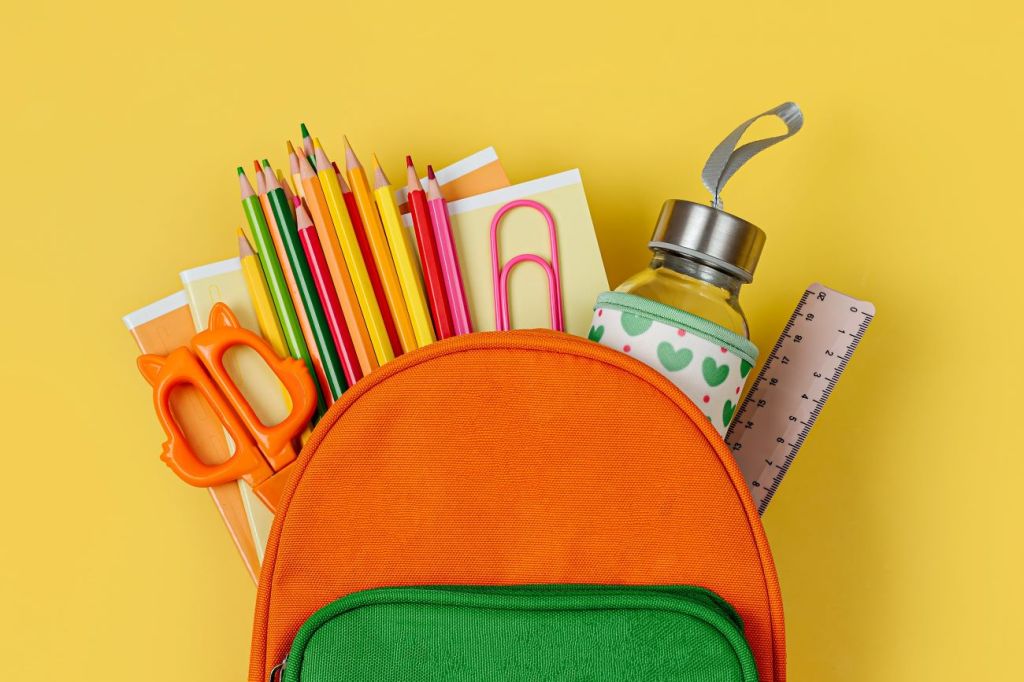
Elementary school
- Backpack
- Lunch box or bag
- Water bottle
- Pencil case
- Pencils
- Pencil crayons
- Sharpener
- Blunt tip scissors
- Eraser
- Ruler
- Glue stick
- Gym shoes
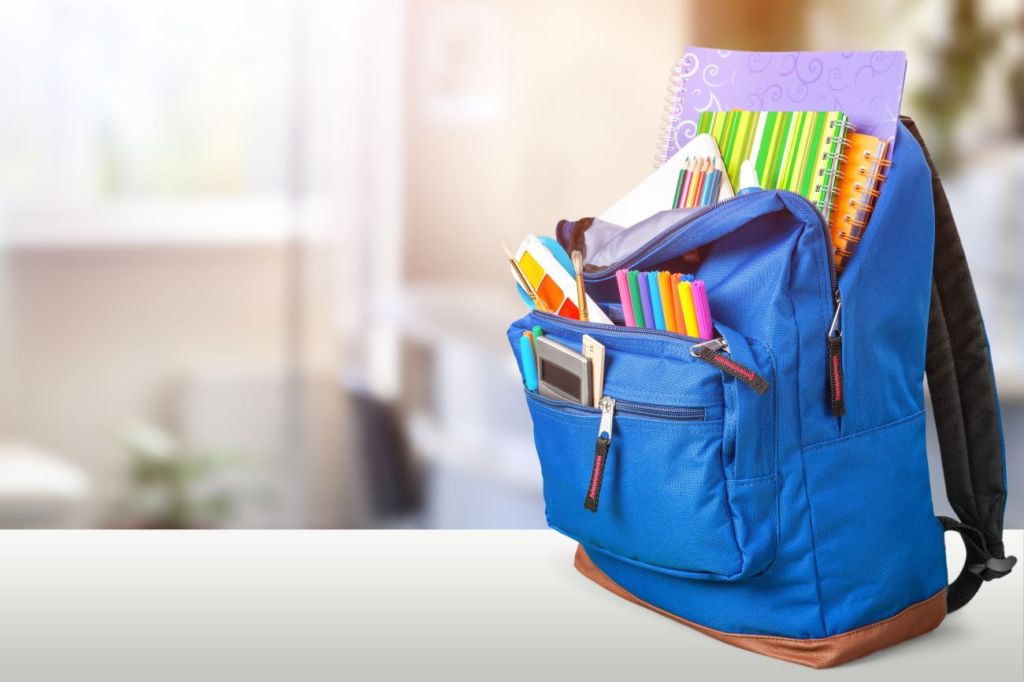
Middle school
- Backpack
- Lunch box or bag
- Water bottle
- Pencil case
- Pens
- Pencils
- Markers
- Highlighters
- White-out
- Eraser
- Glue
- Binder
- Loose-leaf lined paper
- Graph paper
- Subject dividers
- Notebooks
- Report cover
- Calculator
- Geometry set
- Combination lock
- Gym shoes
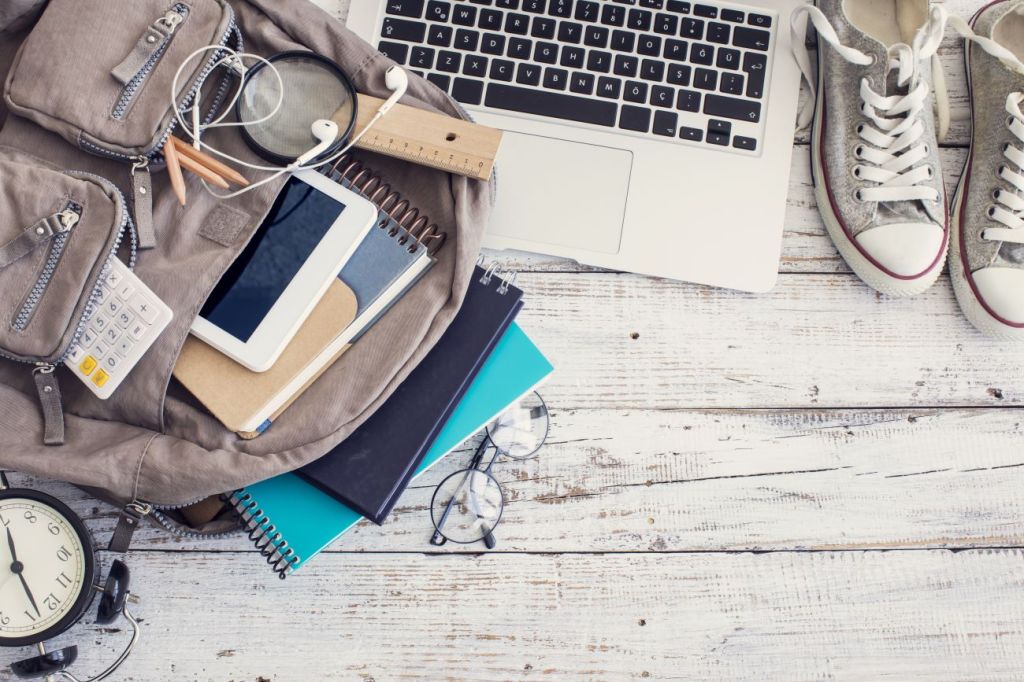
High school
- Backpack
- Laptop
- Headphones
- Water bottle
- Pencil case
- Pens
- Pencils
- Highlighters
- Sharpies
- White-out
- Stapler
- Scissors
- Post-its
- Index cards
- Binders
- Clear binder pouches
- Loose-leaf lined paper
- Subject dividers
- Notebooks
- Report cover
- Weekly planner
- Scientific calculator
- Geometry set
- Combination lock
- Locker hooks
While these items cover the essentials that allow your kids to get their schoolwork done, there is also a lengthy list of must-have clothing items. For back to school in the fall, that can mean raincoats, splash pants, or an umbrella, as well as indoor and outdoor shoes and rain boots. And let’s not forget that on-trend back to school outfit!
When should you go back to school shopping?
According to the experts (teachers!), the best time to go back to school shopping is in July or August. Which makes sense! Summer is a time when stores are stuffed full of back to school displays (for many retailers, back to school is second only to the holidays) and your teen is more likely to snag that coveted backpack.
Not all parents relish the prospect of back to school shopping (after all, who wants to admit the summer is almost over!), but another reason to shop during summer vacation is that supplies do run out. Any parent who has tried to tick every time off their kid’s back to school list the day before Labour Day will know what we’re talking about.
Learn more about the best daily back-to-school routines for kids and teens.
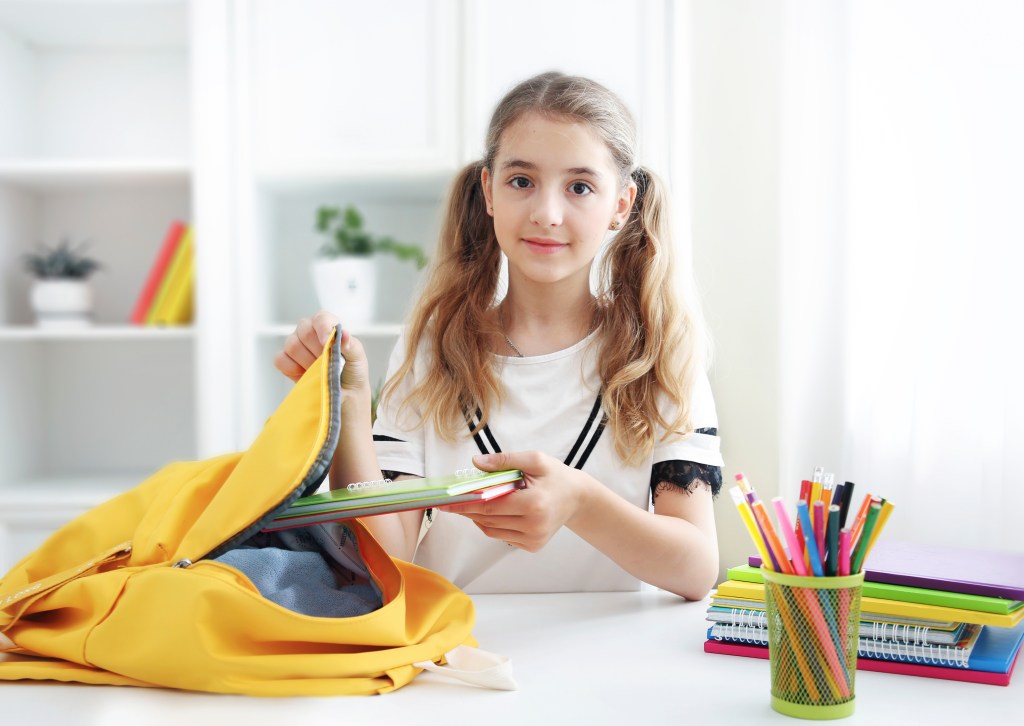
7 tips to save on back to school shopping
Back to school shopping can take a real bite out of a family’s budget. Here are seven tips to help keep costs in line while still checking all the items off your kids’ school supply list.
1. Decide on the essentials
A conversation about what is needed and what is wanted is best had before you actually head out to the stores. This way an agreement can be reached about what comes out of the family budget and what are extras (those must-have designer sneakers for example). Having a list of nice-to-haves creates a great opportunity for earning those items through chores. Extra items could also be great gift requests for family members on special occasions.
2. Agree on a budget
This is another discussion worth having ahead of the actual shopping process. Divide the budget into school supplies, clothing, and tech. Then allocate a dollar amount to each category. There may be some items that are beyond the family budget or that do not need to be bought right away (perhaps these can be saved for later in the school year or as a request for a birthday/holiday gift). While the excitement makes it easy to get caught up in buying everything at once, it’s okay to take some time and spread the spending over the school year.
Tip: Kids and teens can use our free savings goal calculator to help budget for the back-to-school items.
3. Do an inventory of what you already have
Once the budget is set, another great tip for trimming costs is to go through the end-of-year supplies that are leftover and set aside anything that still holds up. For example, there is no need to buy a new geometry set each year and with a little elbow grease and a recycling bin, binders can be emptied and used again. Sort out backpacks and outerwear that can be handed down to younger siblings, too. And, finally, do a deep dive in the cupboards (and in the dark corners of your teen’s bedroom). Chances are good that you don’t need to buy yet another water bottle.

4. Look for student discounts
While the cost of back to school shopping for teens tends to be pricier, there are several options for leveraging student discounts in Canada. For a reasonable annual fee, the SPC card offers discounts in several popular stores, as long as you provide a student ID. Several tech companies offer deals on their equipment. There are also student discounts available for online programs including Adobe, Spotify, and other streaming platforms. Grocery stores, restaurants and public transit offer deals for students with valid IDs, too.
5. Shop for clothing in thrift stores
Thrift stores not only provide a great savings opportunity, but thifting is back in vogue. Win, win. While there are great clothing options for all ages and stages, teens should really enjoy the hunt for the perfect piece. This approach to shopping saves money and helps teach kids about environmental issues and the prevalence of fast fashion. Before you go, set your kids the task of filling a bag of clothes they are no longer wearing to bring with them to the thrift store. Some stores offer coupons in exchange for drop offs, which means extra savings!
6. Compare prices
We get it, making multiple stops at different stores can be exhausting. But planning ahead can once again add to potential savings. Are there supplies that can be bought in bulk like printer paper? Or perhaps a trip to your dollar store for some of the basics is worth it. Keep an eye on flyers for the bigger ticket items, too. Large chain grocery and drug stores often have back to school displays at the end of summer and if you have a rewards card for that store, there is the added bonus of collecting points to be used for things like groceries and household items. Apps like Flipp or Price Dropper can help you source the deals before you head out the door.
7. Have teens pay for items they want (but don’t need)
If your teen has a part-time job or your younger kids are eager to pitch in with chores, it is more than okay to give kids the responsibility of buying those wish list items with their own savings. Not only does it help the family stay on budget, it can also help kids to take greater care and responsibility for those items.
Back to school shopping can be a great opportunity to practice budgeting and planning ahead, while reminding kids about the value of recycling and reusing before buying new. It also offers a chance for teens to think carefully about needs versus wants, which may motivate them to focus on saving funds through chores and work in order to buy some of those must-have items.
Mydoh can help teens stay within their budget as they can only spend the money they have in their wallet.
Download Mydoh to help your tweens and teens gain real-life experience managing their money.
This article offers general information only and is not intended as legal, financial or other professional advice. A professional advisor should be consulted regarding your specific situation. While the information presented is believed to be factual and current, its accuracy is not guaranteed and it should not be regarded as a complete analysis of the subjects discussed. All expressions of opinion reflect the judgment of the author(s) as of the date of publication and are subject to change. No endorsement of any third parties or their advice, opinions, information, products or services is expressly given or implied by Royal Bank of Canada or its affiliates.







